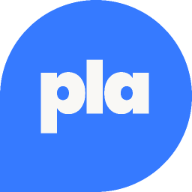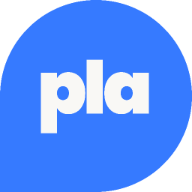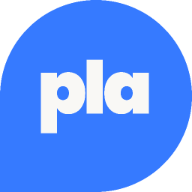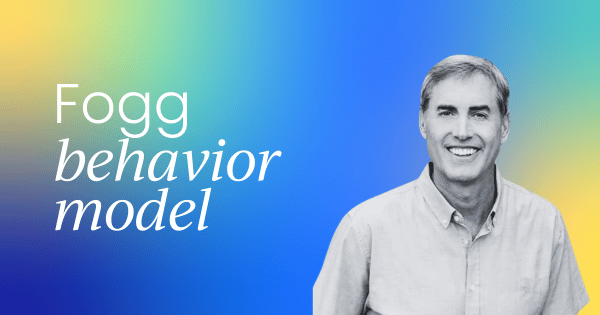What is the Fogg behavior model?
The Fogg Behavior model is a science-backed framework for understanding and creating behavior change.
Created by Stanford Professor, Dr. BJ Fogg, the Fogg behavior model suggests behavior is equal to motivation times ability times prompt (B=MAP).
Essentially, it’s when these three elements come together at the same time, action is most likely to occur.
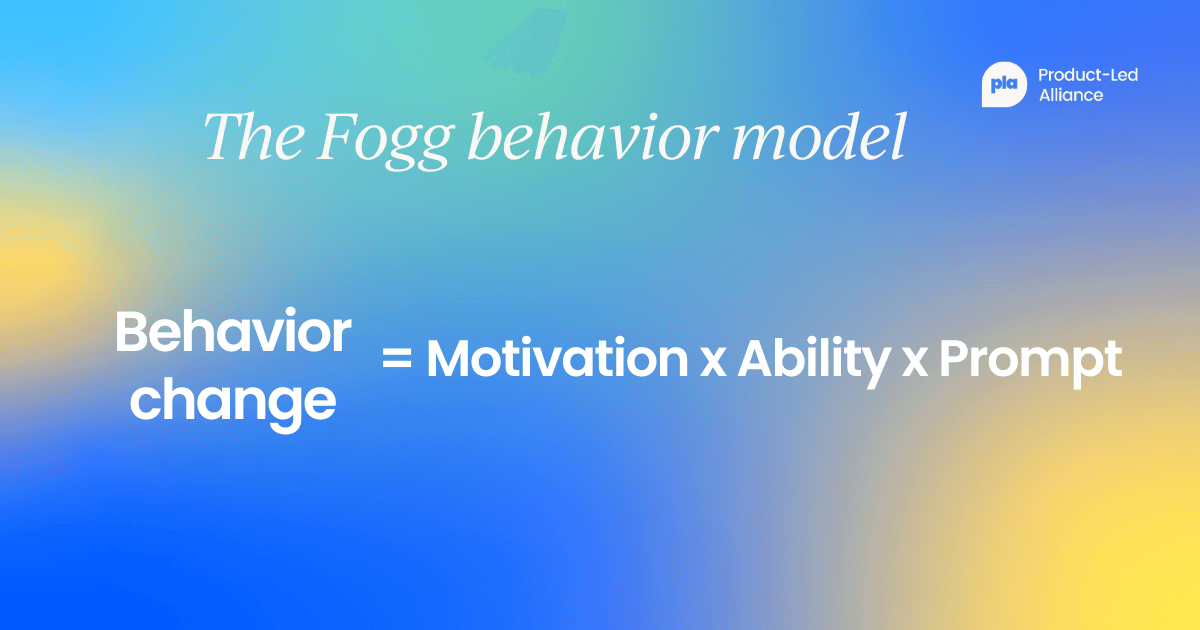
This model has many use cases but is famous for its use in user experience (UX) design. UX designers use Fogg’s principles of behaviour change to create user experiences which promote behaviour change.
For example, sales reps hate filling out CRM data, but they know it’s important for the business. So, a savvy UX designer may use the principles of motivation, ability, and prompt to change sales reps’ behaviour during product onboarding. Resulting in a higher adoption rate of the tool.
Or think of a running app which slowly increases the time a user runs for over a month. Allowing users to change their behavior from an inactive lifestyle to running daily.
In short, the Fogg behavior model can improve user experience and adoption by implementing the principles of behavior change. With this in mind, let’s explore these factors in depth.

The Fogg behavior model explained
Motivation
Without motivation to read this article, you'd struggle to keep going and likely wouldn’t have made it this far - your customers are the same.
If they aren’t motivated to act, they probably won’t.
The Fogg model specifies three types of motivation (often referred to as the core motivators) that can be engaged to help motivate consumers.
The three motivators are:
- Sensation (AKA pleasure and pain) – People are more motivated to do things they enjoy than things they hate. Ensuring that your desired action brings pleasure to your customers (or resolves a key pain point) can be a first step in engaging them in action.
- Anticipation (AKA hope or fear) – Your customers may be hopeful that purchasing your product will solve their problem, or fearful that they might miss your event. Either way, they are motivated to take action.
- Belonging (AKA social acceptance) – Your customers want to do what gains them social acceptance, so show them what other people do/think. For example, cultivating an active customer community.
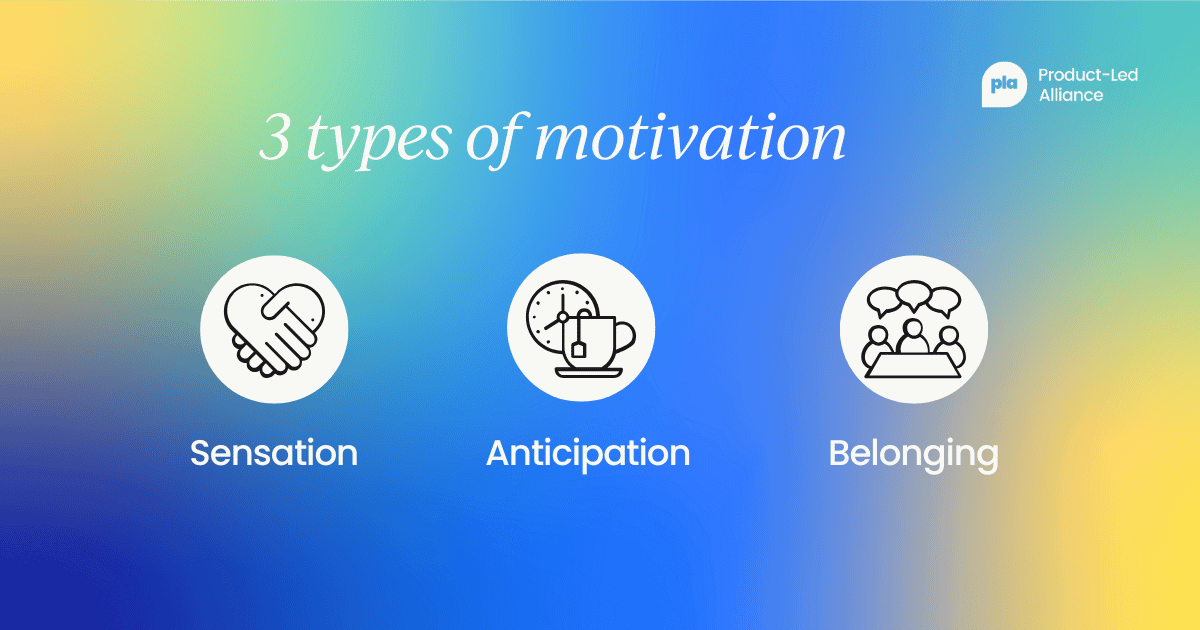
Often motivation comes and goes in waves, so it’s important to ride the wave.
When your customers are super motivated, you can enable them to succeed by helping them build habits for when their motivation dips. Fogg calls this ‘facilitating behavior change’ and has three tips for how to do it.
Set customers up for success by helping them:
- Do hard things that help to structure future behavior.
- Do something hard that makes a future task easier.
- Get better at a difficult task, so it becomes easier.
Ability
In Fogg’s model, ability isn’t simply skill level — it’s the level of available resources a customer can put towards the desired action.
For example, your ability to complete an online course might depend on your available time to take the course, or whether you have the funds to purchase it.
Therefore, understanding your customers' resources and adapting to them can help you to drive desired actions and conversions.
Here are some types of resources which could stop your customers from taking the desired actions:
- Time - How much spare time does your customer have to complete the task? Try breaking up long tasks into smaller chunks that take less time to complete.
- Money - The task required should be within the financial range of the target customer.
- Physical effort - How much effort does the action take? Is it just one click on their phone, or do they need to go load up their laptop, then the website, then take the action?
- Mental effort - Similar to the above, but more about the mental load of the task. Do they have to remember to do something later? Do they have to think particularly hard?
- Routine - Your customers may struggle to do something they don’t normally do. Trying to integrate your actions into their routine will increase their ability.
- Social deviance - People like to be comfortable socially, if your action is outside their social norm, it will be challenging to do.
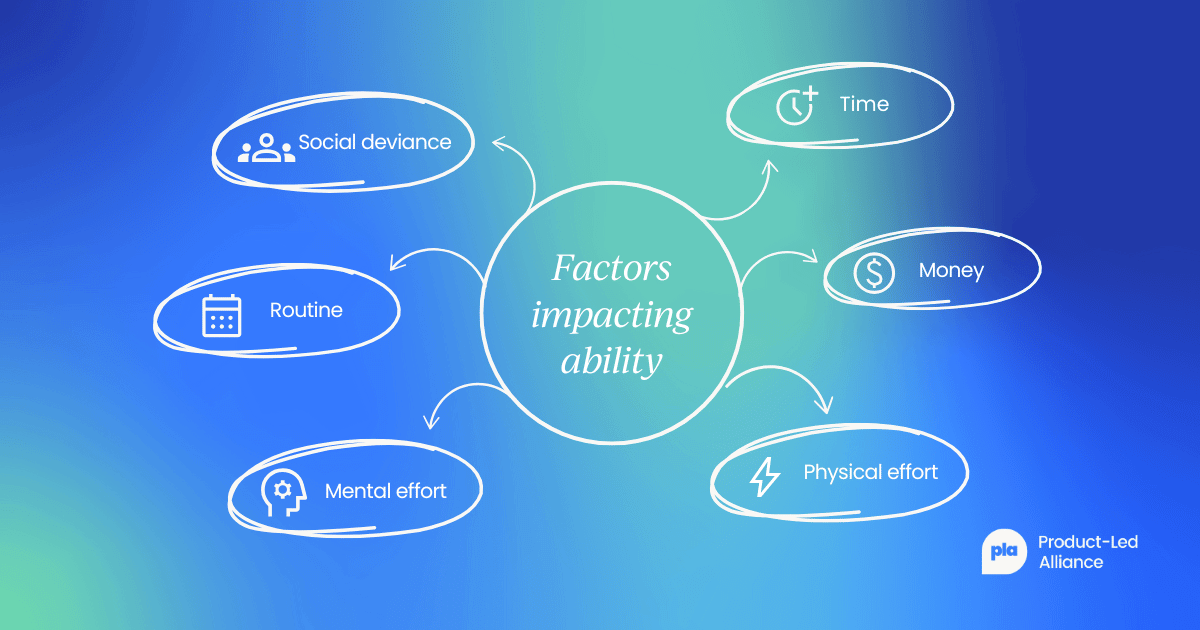
Increasing customers' abilities is much easier than increasing their motivation.
By training your customers, the action becomes easier to do and therefore more likely to be completed. This is the most labor-intensive method of increasing ability but also the most effective.
Another way to increase your customers’ ability to perform the behavior is by providing tools or resources to help them get better at the task gradually. An informative blog post or a new tool for your product could be what your customer needs to take action.
Or the problem could be you, not them.
Try scaling back your target behavior to a more basic step that is easier for your customers to complete. You could even break up your current target behavior into 2-3 smaller steps. This creates momentum, allowing your customers to do more over time.
Prompt
A prompt is a little reminder to take the desired action. This can also be referred to as a cue, trigger, call-to-action (CTA), or request. Without a prompt, action won’t happen.
Prompts should be well planned to match when your customer is most likely to act.
Prompts can also be used to create a series of actions, for example during product onboarding.
There are a few different types of prompts — each designed for slightly different scenarios, understanding the differences can help you choose the right tool for the job.
- Facilitator - When customers have high levels of motivation but low levels of ability you can help them out by using a prompt to facilitate action. For example, sending customers small tasks that help give them direction.
- Spark - What if your customers have the ability but no motivation to do the task? You give them a spark! A spark is a prompt that gives the customer a little boost of motivation to get them started. For example, getting them excited about trying a new feature.
- Signal - Your customer has the motivation and the ability but still isn’t acting? Maybe they just need the signal to get started. Give them a nudge to remind them what their next action should be.
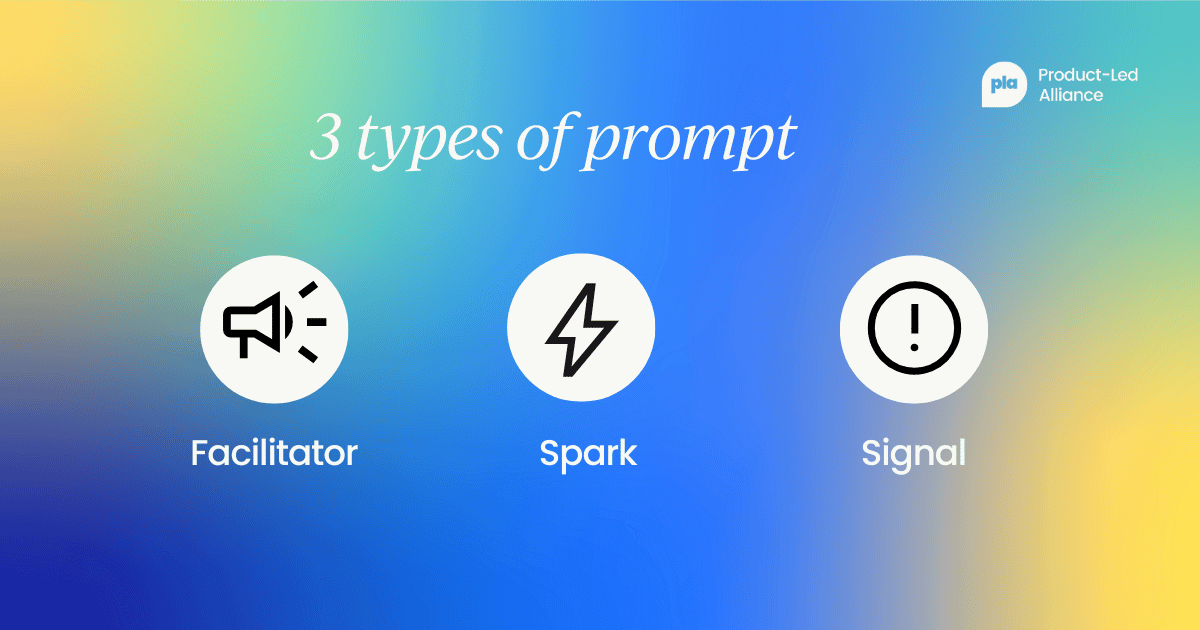
5 use cases for the Fogg model in product teams
Use case #1: Educate your customers
Let customers know why taking that next step is worthwhile.
Whether you want them to sign up to your email list or make a purchase, your customer wants to know why that benefits them. Letting them know why your product benefits your customer will keep them motivated to take action.
Use case #2: Make conversions simple
Make sure each conversion step is as simple as possible to ensure your customers can complete the conversion.
You should also try to avoid any barriers or extra steps as this may become too much for your customer. Nothing’s worse than a customer almost acting then leaving the page without completing the action.
Use case #3: Keep users engaged
Most user interfaces tell customers what each feature does but not why that feature is important.
This can lead to users disengaging with your product.
To re-engage and motivate your users, try telling them the importance of each feature. This makes them feel like they are doing something important and worthwhile — keeping them motivated for longer.
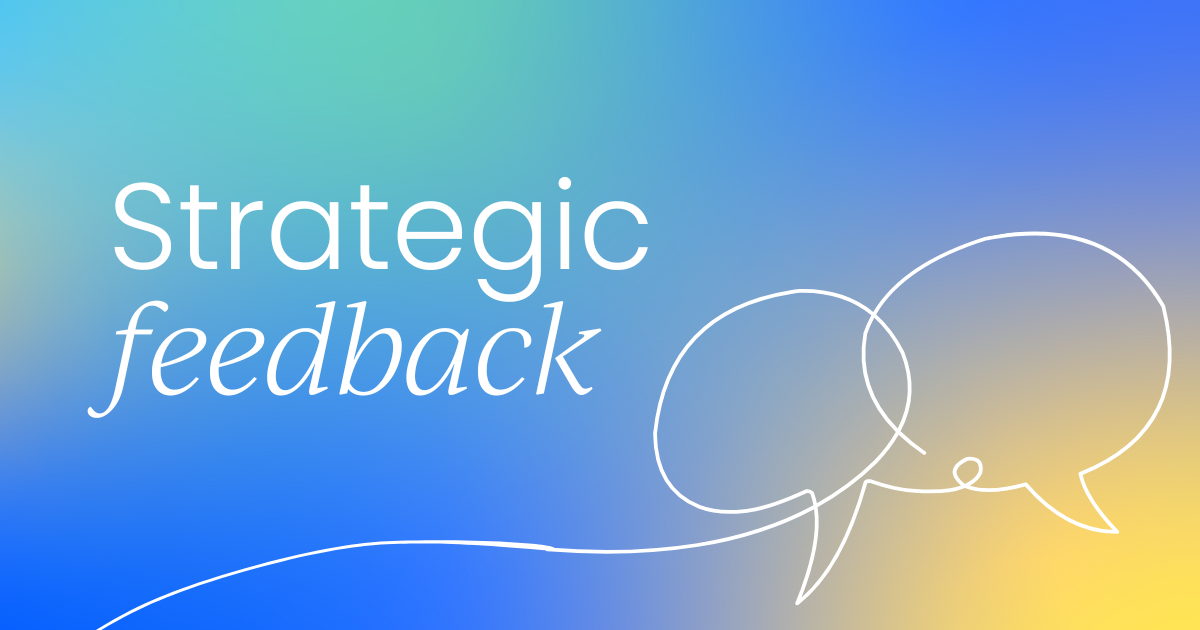
Use case #4: Onboard in a straight line
Having lots of different pop-ups and messages can leave customers confused, demotivated, and with a high cognitive load.
Using a linear onboarding process can help users to make sense of the process without being overwhelmed.
Here are a few more ideas for keeping onboarding straightforward.
- Order tasks from easiest to most difficult.
- Break large tasks up into smaller tasks.
- Remove any unnecessary steps in the onboarding process.
Use case #5: Prompt user retention
Getting people to use your product isn’t always the hardest part - sometimes getting customers to keep using your product is the struggle.
Sending well-timed prompts can allow you to keep reminding customers to use your product, and or new feature until it is adopted into their daily routine.
This can help you stay top-of-mind while your product is still new to your recently onboarded customers.

Tips for using the Fogg behavior model
Here are a few bonus tips for making use of the Fogg behavior model.
- Define desired behavior - Before you get started, make sure to define exactly what your desired customer behavior is and the steps in that process.
- Give meaning - Ensure that you give meaning to your customers - they want to feel like they are part of something meaningful.
- Provide a small step - Remember that the best way to change behavior is to start small.
Final thoughts
The Fogg behavior model can be a powerful tool in helping you to understand your users and change their behavior to help your conversion rates or onboarding process.
Ensuring you target your customers at the right time with a simple action will help to motivate them to act.



 Follow us on LinkedIn
Follow us on LinkedIn